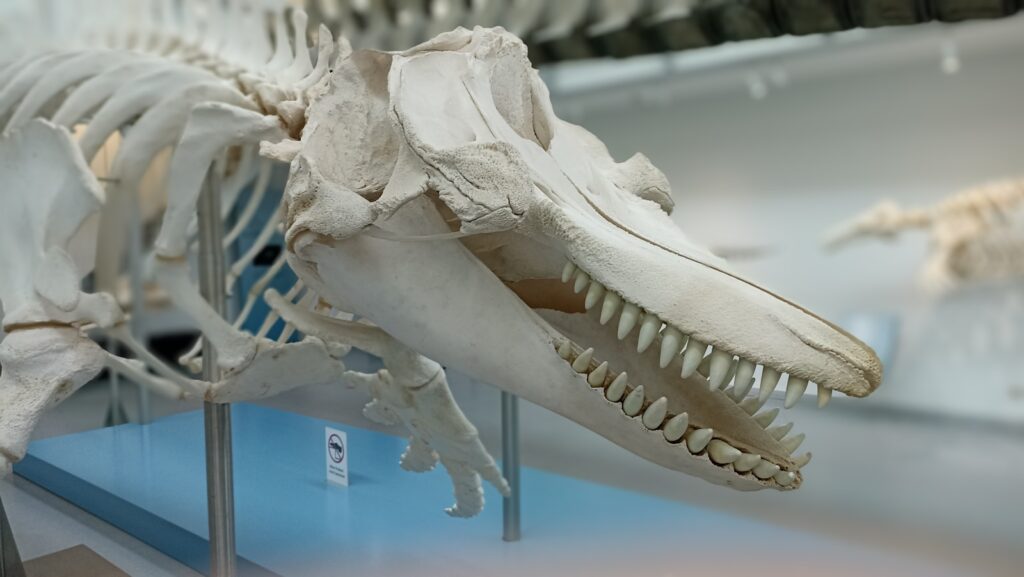Dinosaurs, those magnificent prehistoric beasts that once ruled our planet, found an unexpected second life in the neon-lit worlds of classic arcade games. From the 1980s through the early 2000s, these ancient creatures stomped, roared, and battled their way across pixelated landscapes, capturing the imaginations of gamers worldwide. The marriage between dinosaurs and arcade gaming created some of the most memorable gaming experiences of the era, combining humanity’s fascination with these extinct animals with the emerging interactive entertainment medium. This exploration looks at how dinosaurs influenced arcade gaming history, the specific titles that featured them, and why this particular combination proved so captivating for players of all ages.
The Dawn of Dinosaurs in Gaming

The incorporation of dinosaurs into arcade gaming began in the early 1980s, coinciding with a renewed cultural interest in prehistoric life. Game developers, always searching for compelling characters and settings, recognized that dinosaurs possessed inherent qualities that made them perfect arcade antagonists or protagonists. They were visually striking, immediately recognizable, and carried an air of danger and excitement that resonated with players. Early implementations were technically limited, with blocky pixels attempting to recreate these massive creatures, but even these rudimentary representations managed to capture the essential appeal of dinosaurs. This period marked the beginning of what would become a long-standing relationship between paleontological subjects and interactive entertainment, establishing dinosaurs as staples in the arcade landscape.
Sega’s “Dino King”: The First Dinosaur Arcade Hit

In 1982, Sega released what many consider the first significant dinosaur-themed arcade game, “Dino King” (known as “Pulsar” in some regions). This simple yet engaging game allowed players to control a stylized Tyrannosaurus rex as it battled through prehistoric landscapes. Though primitive by today’s standards, “Dino King” established several important precedents that would influence future dinosaur games. The game gave players the novel experience of embodying a powerful dinosaur rather than merely fighting against them, creating a unique power fantasy. The success of “Dino King” demonstrated to developers that dinosaur themes could attract quarters and build dedicated player bases. Despite its technical limitations, the game’s colorful cabinet art featuring dramatic dinosaur illustrations helped compensate for the simplistic on-screen graphics, drawing players in with the promise of prehistoric adventure.
Taito’s “Bubble Bobble” and Cute Dinosaur Mascots

Not all arcade dinosaurs were fearsome monsters – some developers recognized the potential for dinosaurs as cute, appealing characters. Taito’s 1986 hit “Bubble Bobble” starred Bub and Bob, two adorable dinosaur characters who trapped enemies in bubbles. This game represented a significant departure from the threatening dinosaur archetype, instead embracing a cuter aesthetic that appealed to younger players and families. The success of “Bubble Bobble” demonstrated the versatility of dinosaur themes in gaming, showing they could work across different genres and target audiences. The lovable dinosaur twins became iconic mascots for Taito, appearing in numerous sequels and spin-offs throughout the arcade era. This approach to dinosaur representation helped expand the appeal of arcade gaming beyond the teenage male demographic that dominated early arcade culture, bringing dinosaur-themed games to a broader audience.
Prehistoric Peril: “Caveman Ninja”

Data East’s 1991 release “Caveman Ninja” (also known as “Joe & Mac”) took players back to the fictional caveman era where dinosaurs and humans coexisted. This side-scrolling action game featured cave-dwelling protagonists battling against an array of dinosaurs and other prehistoric creatures. The game’s colorful, cartoonish art style presented dinosaurs as both enemies and occasional allies, with some levels allowing players to ride friendly dinosaurs. “Caveman Ninja” exemplified how arcade games often playfully ignored scientific accuracy in favor of creating entertaining gameplay scenarios, merging dinosaurs with human characters despite the millions of years that separated them in reality. The game’s popularity spawned several sequels and home console ports, cementing its place in the dinosaur arcade pantheon. “Caveman Ninja” demonstrated how dinosaurs could be integrated into varied gaming scenarios beyond the obvious “hunting dinosaurs” or “being hunted by dinosaurs” premises.
Cadillacs and Dinosaurs: Comic Adaptations

One of the most memorable dinosaur arcade titles came from an unexpected source – a comic book adaptation. Capcom’s 1993 beat ’em up “Cadillacs and Dinosaurs” was based on the comic series “Xenozoic Tales” and depicted a post-apocalyptic world where dinosaurs had mysteriously returned. This unique setting allowed the game to blend classic beat ’em up gameplay with dinosaur encounters in creative ways. Players fought against both human antagonists and various dinosaur species, creating a dynamic gameplay experience. The game’s detailed sprite work represented a significant advancement in how dinosaurs were depicted in arcade games, with more anatomically plausible designs than earlier titles. “Cadillacs and Dinosaurs” demonstrated how dinosaurs could enhance storytelling in arcade games, providing both environmental obstacles and narrative elements. The game remains a cult classic, celebrated for its distinctive premise and impressive dinosaur designs.
Primal Rage: Dinosaurs as Fighting Game Characters

Atari Games’ 1994 fighting game “Primal Rage” took dinosaur representation in arcade gaming to new heights, featuring dinosaur and giant ape gods battling for supremacy in a post-apocalyptic world. Using stop-motion animation of detailed dinosaur models, “Primal Rage” offered what were arguably the most visually impressive arcade dinosaurs of the era. Each dinosaur character had unique special moves and fatalities, mimicking the popularity of Mortal Kombat but with prehistoric creatures instead of human fighters. The game cleverly incorporated scientific names and characteristics of real dinosaurs, though heavily fictionalized with supernatural abilities. “Primal Rage” became known for its controversial violence and the unique spectacle of tyrannosaurus and velociraptor characters engaging in one-on-one combat. The game’s commercial success demonstrated that players were eager to control dinosaur characters in genres beyond the typical action or adventure formats, extending their arcade presence into competitive fighting games.
The Impact of “Jurassic Park” on Arcade Dinosaurs

Steven Spielberg’s 1993 blockbuster “Jurassic Park” dramatically renewed public interest in dinosaurs and significantly influenced their representation in arcade games. Following the film’s release, a wave of officially licensed Jurassic Park arcade games appeared, including Sega’s light gun shooter and several racing/driving games featuring dinosaur encounters. These games benefited from the film’s scientifically updated dinosaur designs, helping arcade games move beyond outdated representations of dinosaurs as slow, lumbering beasts. The movie’s emphasis on velociraptors as intelligent, dangerous predators particularly influenced how these dinosaurs were portrayed in subsequent arcade games. Beyond the official tie-ins, numerous dinosaur-themed arcade games appeared in the mid-1990s seeking to capitalize on the dinosaur craze sparked by the film franchise. The Jurassic Park phenomenon effectively created a dinosaur renaissance in arcade gaming, elevating these prehistoric creatures to premium attraction status in arcades around the world.
Technical Evolution: From Pixels to Polygons

The representation of dinosaurs in arcade games evolved dramatically from the 1980s to the early 2000s, reflecting the overall technical advancement of gaming hardware. Early games featured simple sprite-based dinosaurs with limited animation frames and often inaccurate proportions due to technical constraints. As arcade hardware capabilities improved in the 1990s, developers could create more detailed dinosaur sprites with smoother animations and more accurate anatomical features. The transition to 3D polygon graphics in the mid-to-late 1990s represented a quantum leap in dinosaur representation, allowing for fully three-dimensional dinosaur models that could be viewed from multiple angles. Games like Sega’s “The Lost World: Jurassic Park” arcade shooter showcased this evolution with relatively sophisticated dinosaur models that moved with greater realism than their sprite-based predecessors. This technical progression made dinosaur-themed games increasingly immersive, with later cabinets even incorporating physical effects like rumbling seats when T-Rex approached to enhance the prehistoric experience.
Gun Survival: Dinosaur Hunter Games

Light gun shooter games featuring dinosaurs became a particularly successful arcade genre in the 1990s, combining the primal thrill of hunting with the technical novelty of gun controller peripherals. Titles like “Jurassic Park,” “Lost World,” and “Dinosaur King” placed players in first-person scenarios where they needed to quickly shoot approaching prehistoric predators. These games often employed a “bigger is scarier” philosophy, with the T-Rex typically serving as the ultimate boss encounter, its approach signaled by trembling water cups or thunderous footsteps. The physical gun controllers added a tactile dimension to the dinosaur hunting experience that wasn’t available in home console games of the era. Some cabinets featured elaborate environmental designs, with mock jungle foliage surrounding the screen or dinosaur figures mounted atop the machine. These immersive elements combined with the inherent tension of facing charging dinosaurs made dinosaur-themed light gun games among the highest-earning arcade attractions of their time.
Educational Value of Arcade Dinosaurs

While entertainment was the primary focus of arcade games, dinosaur-themed titles inadvertently served educational purposes for many young players. Games like Taito’s “Dino Rex” included the scientific names of dinosaur species alongside their in-game representations, introducing players to paleontological terminology. Some arcade games made efforts to incorporate contemporary scientific understanding of dinosaurs, particularly after the Jurassic Park-inspired shift toward depicting certain dinosaurs as quick, agile hunters rather than slow behemoths. Arcade dinosaur games often sparked interest in dinosaurs among children, leading many to pursue further reading about paleontology outside the arcade environment. Though scientific accuracy was frequently sacrificed for gameplay excitement, with numerous games featuring humans and dinosaurs coexisting or dinosaurs with fantastical abilities, these games nevertheless maintained public interest in prehistoric life during a crucial period of changing scientific understandings about dinosaurs. Some arcade operators even placed informational placards about real dinosaurs near popular dinosaur-themed cabinets, recognizing the educational opportunity these games presented.
Dinosaurs and Arcade Cabinet Design

The external design of dinosaur-themed arcade cabinets represented some of the most creative and striking visual presentations in arcade history. Game manufacturers recognized that realistic dinosaur imagery on cabinet art could draw players from across an arcade floor. Many dinosaur game cabinets featured three-dimensional elements, such as sculpted dinosaur heads protruding from the marquee or dinosaur claws appearing to rip through the sides of the machine. The most elaborate designs incorporated motion sensors that would trigger dinosaur roars or cabinet vibrations when players approached, creating an interactive experience before the game even began. Cabinet artwork often depicted dinosaurs with greater detail and realism than the actual in-game graphics could achieve, helping to set player expectations and create excitement. The imposing physical presence of these specially designed cabinets contributed significantly to the overall appeal of dinosaur arcade games, making them centerpiece attractions in many gaming venues.
The Legacy of Arcade Dinosaurs in Modern Gaming

The tradition of dinosaur-themed arcade games established important precedents that continue to influence modern video games across all platforms. The portrayal of dinosaurs as both terrifying enemies and playable characters established versatile roles that dinosaurs still occupy in contemporary gaming. Many game designers who grew up playing these classic arcade titles have incorporated dinosaurs into modern games, often citing these early experiences as inspirational. The commercial success of arcade dinosaur games demonstrated the enduring market appeal of prehistoric themes, encouraging continued investment in dinosaur-related gaming content. Even as traditional arcades declined in the West, dinosaur-themed arcade games remained fixtures in family entertainment centers and movie theater lobbies, maintaining the tradition for new generations. Modern virtual reality arcade experiences frequently feature dinosaur encounters, building upon the immersive ambitions of the classic dinosaur arcade games while employing vastly improved technology to create even more convincing prehistoric worlds.
Conclusion: Extinction and Survival

As traditional arcades gradually faced their own form of “extinction” in the early 2000s with the rise of home console gaming, dinosaur-themed arcade games maintained remarkable staying power. Something about the combination of interactive gaming technology and prehistoric creatures created an enduring appeal that transcended gaming trends. These games preserved dinosaurs in the cultural consciousness during a pivotal period when paleontological understanding was rapidly evolving, serving as a bridge between scientific discoveries and popular entertainment. The legacy of classic arcade dinosaurs lives on in modern gaming, from indie titles that deliberately evoke pixel-art nostalgia to sophisticated AAA games featuring photorealistic dinosaur models. Through classic arcade games, dinosaurs found a second life in the electronic age, stomping from extinction into the digital realm where they continue to thrive. The enduring appeal of these digital dinosaurs demonstrates that even millions of years after their disappearance from Earth, dinosaurs maintain a powerful hold on human imagination that modern technology has only amplified.



